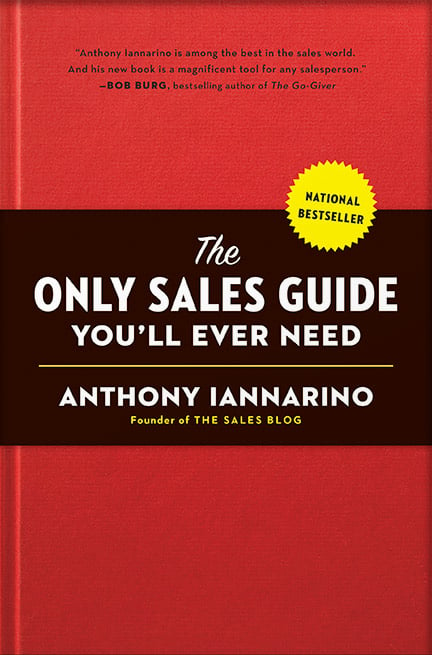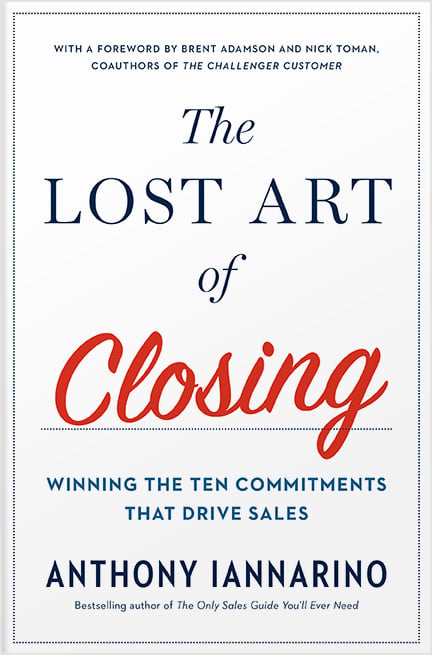The Gist:
- A new sales conversation is replacing the traditional sales call.
- Clients increasingly find traditional sales approaches to be inadequate—and it’s causing them to avoid salespeople.
- The new conversation provides value in areas where we have not yet enabled salespeople.
There is a new sales conversation, and it shares little with legacy sales blog techniques of 10, 25, or even 50 years ago. The reason is simple: you have to create the value your clients need to solve a new set of problems than they faced in the past. Legacy approaches were mainly designed to solve the salesperson’s problems, not the client’s problems.
Those who pay careful attention to B2B sales will notice its trajectory towards greater value creation and away from more transactional approaches. The value you create in the new sales conversation reorders your priorities, serving to solve your problem by solving your client’s problem first.


The Salesperson’s Dilemma
A dilemma is a situation where one must choose between two or more alternatives, especially undesirable ones. Every salesperson enters their prospective client’s office with the goal of creating a new opportunity. The salesperson must somehow create enough value that they can command a second meeting to pursue that opportunity. From the salesperson’s view, the worst possible outcome would be to leave the meeting without reaching either target. But from the client’s view, the worst possible outcome is that the salesperson doesn’t create more than enough value to match the time they gifted them.
The way that we have enabled salespeople for well over fifty years is to focus on the client’s existing pain points. For the last thirty years we have focused on their “problems,” the key to proposing a “solution.” But really, sales organizations were mainly solving the salesperson’s problem—the need to create an opportunity. That method worked well for a long time, but entropy has caught up with it.
The reason your prospective clients meet with you once and avoid committing to another sales conversations because you did not create the right value for them—or enough of the right value. The reasons many deals die in your pipeline is because your approach was not directed at or capable of compelling the client to change. Your client may value your solving their problem and improving their results, but identifying a problem that is already known to them isn’t value creation.


The Client’s Dilemma
The client’s dilemma is that they have a whole, well, mess of problems to solve on a daily basis, but most salespeople they’ve talked to aren’t equipped to provide the help they need.
Some of their problems are systemic and difficult to address. The reason they haven’t addressed these challenges is that they are uncertain what to do, or they’re worried about what kind of new problems changing might create for them, or they are afraid of the many (often political) conversations they are going to need to have internally with stakeholders who have conflicting needs and opinions. Often a combination of all three reasons is enough to keep them from changing.
In this scenario, a legacy sales call doesn’t provide the value the client needs the salesperson to create in the sales conversations, as identifying the problem provides the client exactly none of the help they need. Call this the commoditization of the discovery call, a first meeting where the only real outcome is articulating a problem already well known to the client.
The research suggests that buyers (the words research firms use to categorize clients) are trying to avoid salespeople for as long as they can, preferring to search for answers themselves. In doing so, they find a lot of information but little insight into what they need to change.
The Inflection Point in B2B Sales
An inflection point is a key juncture, after which things change dramatically. These inflection points are not hard to identify or follow, but because many changes are gradual, it’s difficult to believe that a significant and irrevocable change will occur. So, we continue doing what we know until that inflection point forces us to do otherwise.
You may believe that this logic only applies to your clients, but it’s important to recognize that your fate is tied to theirs. There is mounting evidence that we have reached an inflection point in B2B sales, one in which our traditional approaches no longer create enough value for our prospective clients.
The new sales conversation shares a lot in common with the legacy approaches, in that the conversation addresses the more difficult challenges the client faces in making the change necessary to reach the better future state they need. Oddly enough, though, pointing out a years-old problem doesn’t magically solve it.


Solving Both Dilemmas
When your client is struggling to decide how to move forward in a world that provides an increasingly accelerating, disruptive pace of change, they are often paralyzed by an inability to make sense of things. When you are afraid of making a mistake, it feels safest to keep doing what you know.
The reason identifying a problem is impotent when it comes to value creation is because the client is already aware of their problems. What they need from you is a way to understand their environment so they can successfully navigate it. The idea that buyers are trying to find something that will help them clues you in as to what kind of value you need to create to end up with an opportunity.
When you point directly at a problem, even a big one, you are missing the point. Your client’s real problem is the uncertainty that prevents them from moving forward, including the fear of making things worse. Even if they do decide to explore change, that same uncertainty clouds all the conversations they need to have with the many stakeholders who might weigh on the (potential) decision.
For a long time, salespeople described consultative selling as something like “asking good questions” and not using any “high pressure” techniques. I have seen no research documenting client complaints about a lack of good questions or the hard sell. They do, however, complain that the time they spend with salespeople isn’t valuable enough to justify giving them more.
There is a new sales conversation, and you can either recognize it or get left behind.
Do Good Work:
- Begin the work of recognizing what your clients need from you.
- Avoid conversations that create no value for your clients, even if you believe they create value for you.
- Develop strategies for providing your prospective clients with the conversations they need.

Get the Free eBook!
Learn how to sell without a sales manager. Download my free eBook!
You need to make sales. You need help now. We’ve got you covered. This eBook will help you Seize Your Sales Destiny, with or without a manager.
Download Now










.jpg?width=768&height=994&name=salescall-planner-ebook-v3-1-cover%20(1).jpg)


